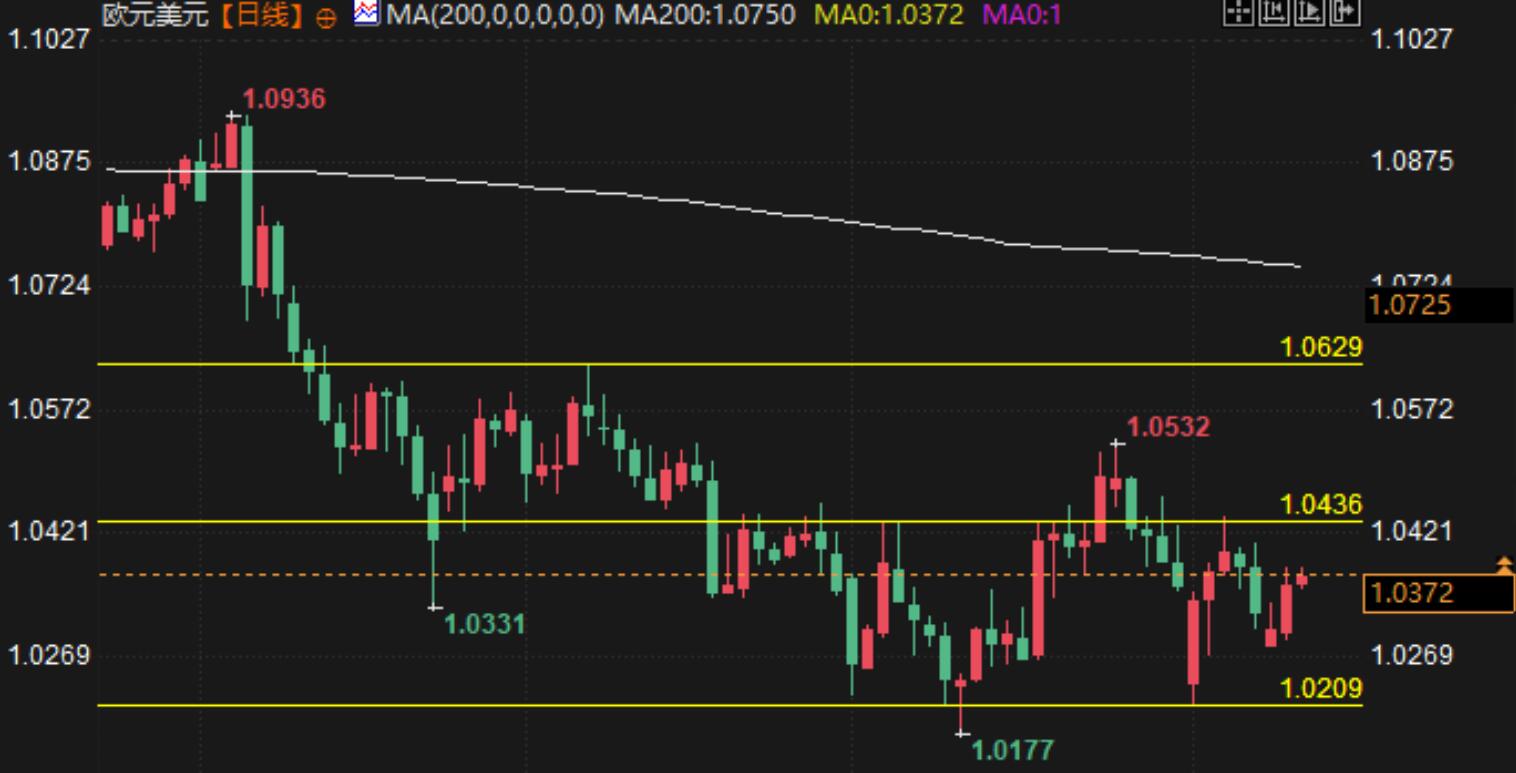Forex Trading Analysis: Will the EUR/USD fall below support or break through resistance?
On Wednesday (February 12th), the focus of market attention was mainly on the upcoming release of the US January Consumer Price Index (CPI) data and the monetary policy movements of the Federal Reserve (Fed). The euro is currently trading at 1.0369 against the US dollar, with a slight increase of 0.06% for the day. The expected US CPI data is stable, but the core CPI remains weak, which creates some uncertainty for the market's outlook on the Federal Reserve's monetary policy. Meanwhile, investors are turning their attention to possible interest rate cuts in the coming months, with the market generally expecting the Federal Reserve to begin cutting rates in June. In addition, the relatively stable economic performance of the eurozone provides support for the euro.
Fundamental analysis
US CPI data and market response
The January CPI data for the United States will be released on February 13th, and the market generally expects CPI to increase by 2.9% year-on-year, unchanged from the previous month. The core CPI, excluding food and energy prices, is expected to remain at 3.1%, higher than the Federal Reserve's target range of 2%. The market expects that although this data has an impact on the short-term trend of the US dollar, it will not immediately lead to a change in the Federal Reserve's policy stance. Analysts from TD Securities pointed out that the core CPI is expected to accelerate its rise in January, mainly driven by price increases in the service industry. Although the January non farm payroll data in the United States fell short of expectations, the unemployment rate dropped to 4.0% and wage growth remained stable, supporting the health of the US economy and providing support for the US dollar.
The policy stance of the Federal Reserve
The Federal Reserve maintained a hawkish stance during its meeting at the end of January, particularly by removing the statement 'inflation has progressed' from the statement. Federal Reserve Chairman Powell made it clear at a subsequent press conference that further interest rate cuts would only be considered when there is substantial improvement in inflation and the labor market. The current policy uncertainty has led to significant divergence in market predictions for the Fed's future policies. Investors generally believe that if CPI data does not show significant improvement, the Fed may start cutting interest rates in June.
European economic background
Compared to the United States, the economic growth in the eurozone is relatively stable, and the performance of inflation data is also within a controllable range. Although the European Central Bank (ECB) has not given a clear expectation of interest rate cuts, the market's concerns about the direction of ECB policies in the coming months are relatively small. The euro can maintain a certain level of stability in the current environment, especially against the backdrop of the relative weakness of the US dollar.
Technical analysis
From a technical perspective, the euro/dollar is currently trading at 1.0369, close to its recent low. The key support level for EUR/USD is 1.0209 (the low point on February 3rd), and if it falls below this level, it may test 1.0176 (the low point on January 13th), and even approach the psychological level of 1.0000 parity zone. In the upward direction, 1.0436 (the high on January 6, 2025) is an important resistance level, followed by the December high of 1.0629 and the 200 day moving average (SMA). If the area is breached, it may push prices further up.
From the perspective of momentum indicators, the RSI index has fallen to 43, indicating a weakening of market momentum. The Average Directional Index (ADX) is currently at 18, indicating a weak market trend and suggesting that price fluctuations may be limited in the short term.

Future Trends and Prospects
Taking into account both fundamental and technical analysis, the short-term trend of the euro against the US dollar may still be dominated by the Federal Reserve's monetary policy expectations. If there is no significant fluctuation in the January CPI data and the market continues to expect the Federal Reserve to cut interest rates in June, the US dollar may remain relatively weak and the euro may receive some support near the support level. However, from a technical perspective, if the euro/dollar falls below the support range of 1.0209, the risk of further decline will increase, especially near the parity range of 1.0000.
In the short term, due to the uncertain market expectations for the direction of the Federal Reserve's policies, the euro/dollar may maintain a volatile consolidation within the current range. If the Federal Reserve's expectation of interest rate cuts is fulfilled, the US dollar may come under further pressure, and the euro is expected to retest its recent resistance levels. However, due to market concerns about policy uncertainty, price volatility may remain high in the short term, and investors need to pay attention to the upcoming CPI data and further statements from the Federal Reserve.
Overall, the future trend of the euro against the US dollar is still influenced by multiple factors. In the short term, domestic demand is closely monitoring the release of the US January CPI data and the latest developments in the Federal Reserve's monetary policy. It is expected that the market will continue to pay attention to the interaction between inflation and Federal Reserve policies, and adjust its expectations for the US dollar based on this.
Tips:This page came from Internet, which is not standing for FXCUE opinions of this website.
Statement:Contact us if the content violates the law or your rights
